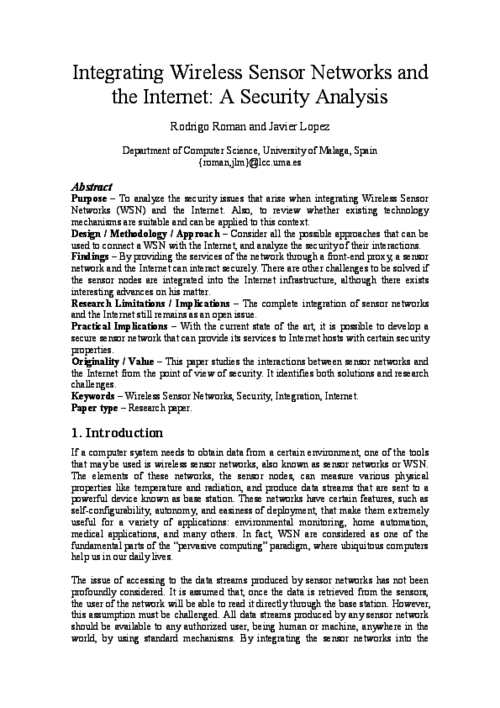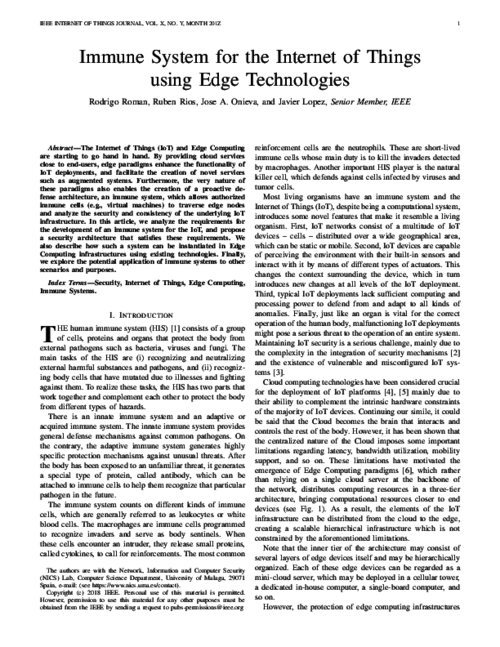 ] Title Type Year
] Title Type Year Internet Research, vol. 19, no. 2, Emerald, pp. 246-259, Mar 2009. DOI
Abstract
Purpose: This paper aims to analyze the security issues that arise when integrating wireless sensor networks (WSN) and the internet. Also, it seeks to review whether existing technology mechanisms are suitable and can be applied in this context.
Design/methodology/approach: The paper considers the possible approaches that can be used to connect a WSN with the internet, and analyzes the security of their interactions.
Findings: By providing the services of the network through a front-end proxy, a sensor network and the internet can interact securely. There are other challenges to be solved if the sensor nodes are integrated into the internet infrastructure, although there exists interesting advances on his matter.
Research limitations and implications: The complete integration of sensor networks and the internet still remains as an open issue.
Practical implications: With the current state of the art, it is possible to develop a secure sensor network that can provide its services to internet hosts with certain security properties.
Originality/value: The paper studies the interactions between sensor networks and the internet from the point of view of security. It identifies both solutions and research challenges.

IEEE Internet of Things Journal, vol. 6, issue 3, IEEE Computer Society, pp. 4774-4781, 06/2019. DOI
Abstract
The Internet of Things (IoT) and Edge Computing are starting to go hand in hand. By providing cloud services close to end-users, edge paradigms enhance the functionality of IoT deployments, and facilitate the creation of novel services such as augmented systems. Furthermore, the very nature of these paradigms also enables the creation of a proactive defense architecture, an immune system, which allows authorized immune cells (e.g., virtual machines) to traverse edge nodes and analyze the security and consistency of the underlying IoT infrastructure. In this article, we analyze the requirements for the development of an immune system for the IoT, and propose a security architecture that satisfies these requirements. We also describe how such a system can be instantiated in Edge Computing infrastructures using existing technologies. Finally, we explore the potential application of immune systems to other scenarios and purposes.
